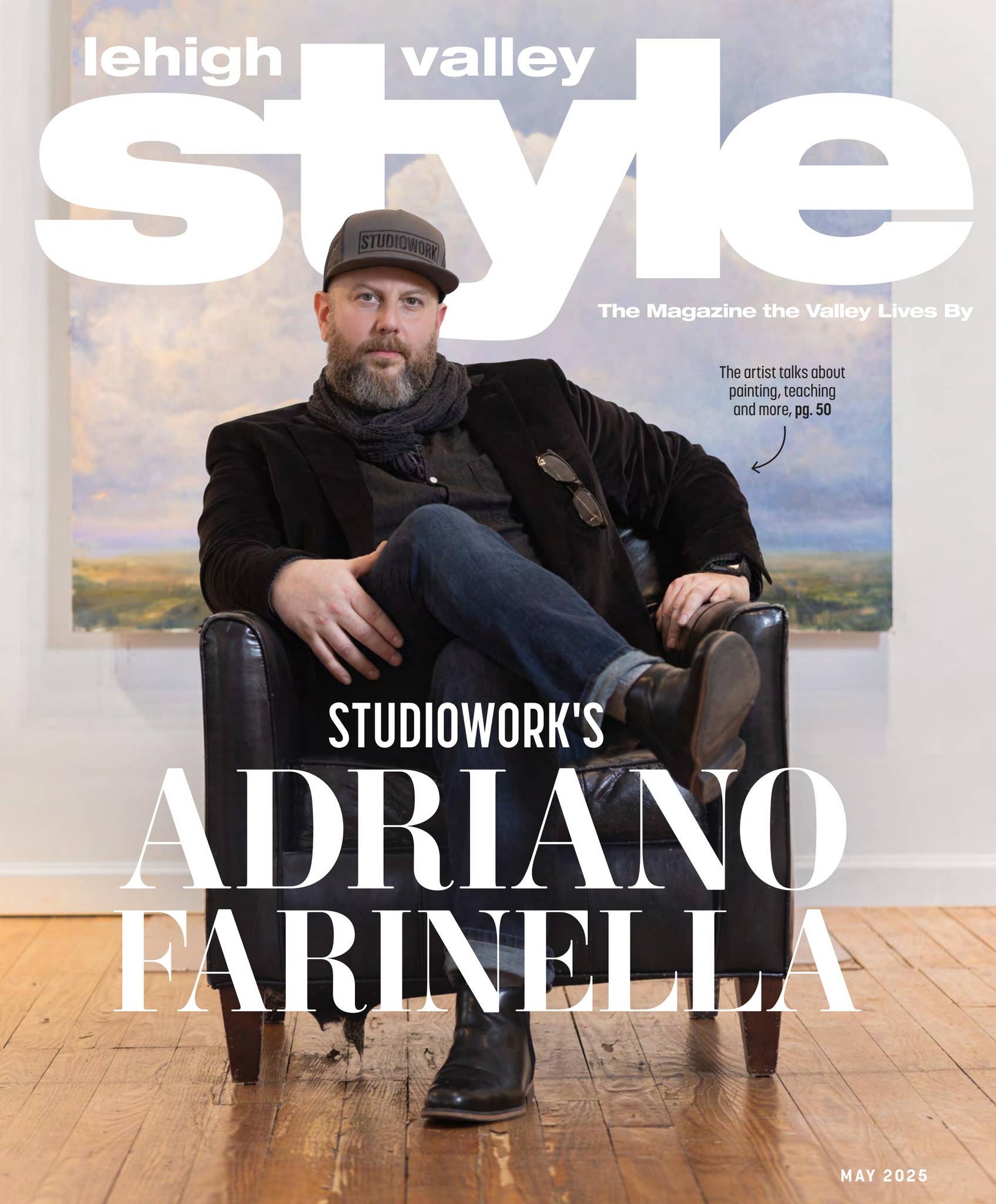When you come up with a good idea, it's tempting to replicate it many times over—that's how chain stores are born, and restaurant franchises are created. It makes a lot of sense.
The same is true for Rakkii Ramen, a business started by chef-owner Marco Lu in December 2018 on SouthSide Bethlehem. He runs it with his son, Bryan, who attends classes at Lehigh, within paces of the restaurant. “I think secretary is a good metaphor for what I do, handling any logistical issues or customer service, and offer consultation for business operations. Anything Marco can't do or doesn't have time for, I'll take on,” says Bryan.
Within a few years of massively hard work, Marco and Bryan have replicated and tweaked this business model in other destinations, with Rakkii Ramen locations in Doylestown, New Brunswick, New Jersey, and Smithtown, New York, along with quick-service restaurant Takkii Ramen in Allentown, Quakertown and, soon, Slatington.
“I love ramen. This was my dream. I wanted to bring something new to the area,” says Marco, who studied ramen in Japan before opening his businesses here in the Lehigh Valley.
Restaurant ownership was a new thing when he undertook it a few years ago. But for Marco, the love of food started early—he was able to cook meals for his family when he was in middle school. And although he ran an importing and exporting business for many years, good business sense translates to other businesses, it seems. Perhaps, though, he ordained his own success with bowls of ramen: in Japanese, “rakki” translates as “lucky.”
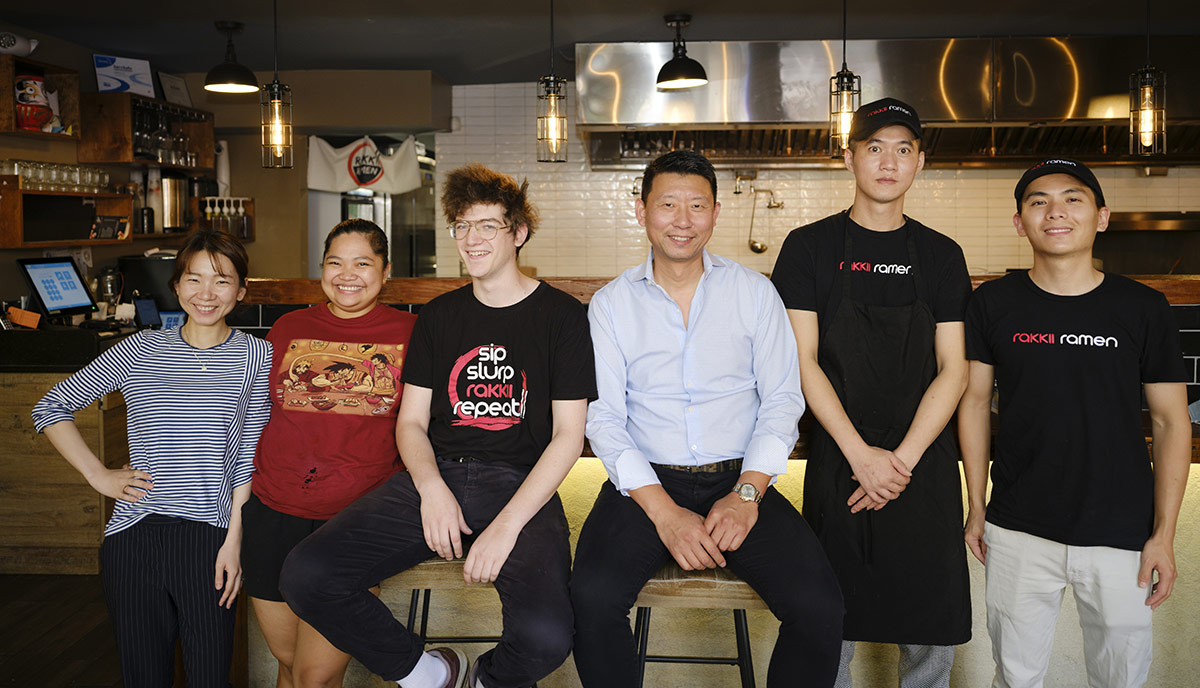
It's lucky, then, that the Lehigh Valley has more than one place for ramen. Rakkii offers both traditional and modern takes on ramen and Japanese fare, prepared expertly, and with meticulous attention to presentation—which is something you'll discover even if you order ramen to go. The noodles and broth are packed completely separately, with at-home assembly instructions included. (Note: Marco made no fewer than three bowls of ramen during the shooting, styling and tasting of his food by Alison Conklin and me, such is the attention to detail.)
Marco also made sure that if someone at the restaurant has leftover food that they don't go home brothless. (This is like handing out liquid gold.) It's such a small gesture to a customer, but it's an example of how to go the extra mile, and why businesses such as Rakkii Ramen have managed to attract and maintain such a strong following—even through a pandemic. (Global health crises seem to make people want to consume comfort food.)
The broth, of course, is the backbone of ramen, and perhaps the most important ingredient. It is also the most time-consuming part; in order to create those layers of flavor, it takes about 10 hours. It is the definition of a labor of love. “We closed one day because we ran out of broth. People were shocked,” says Marco.
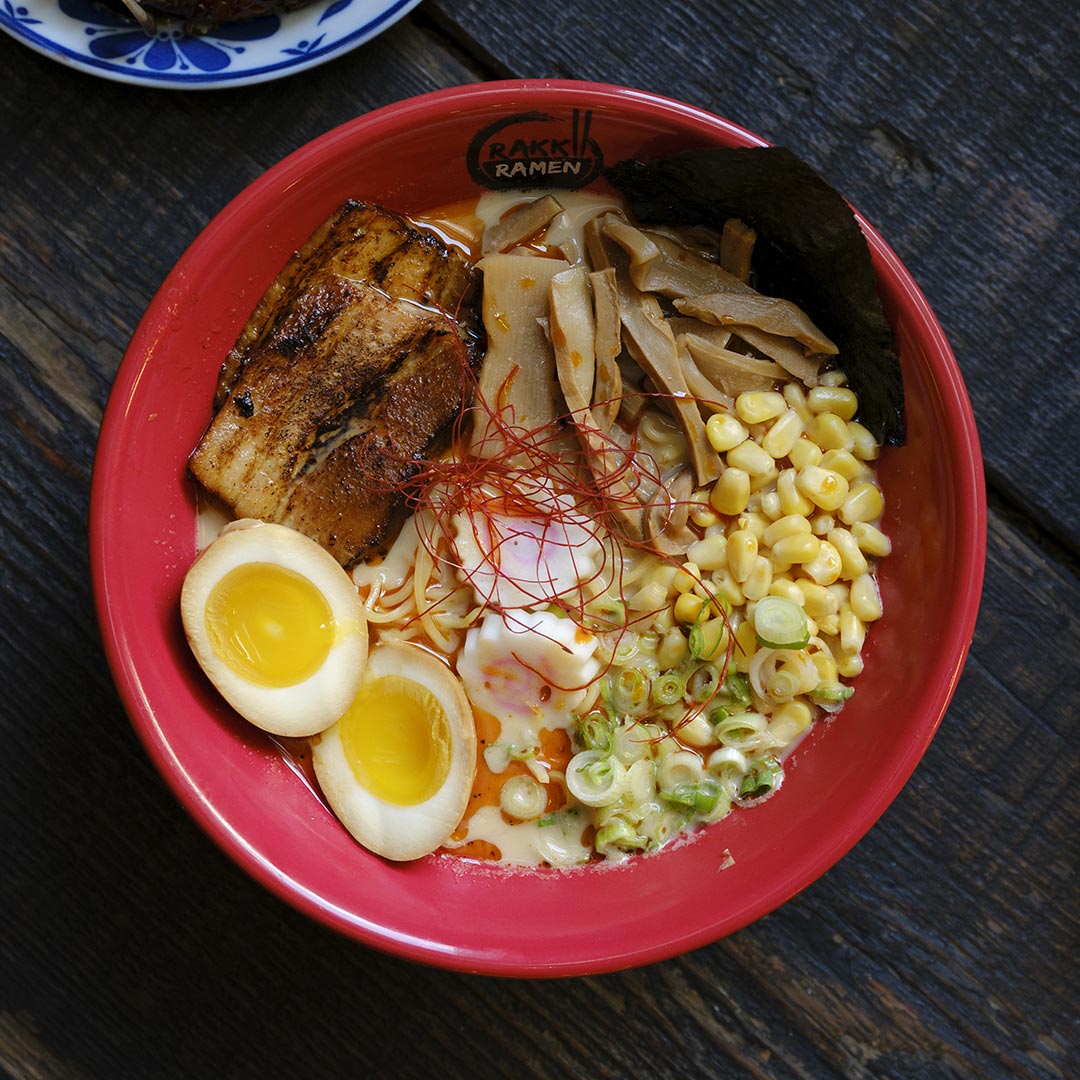
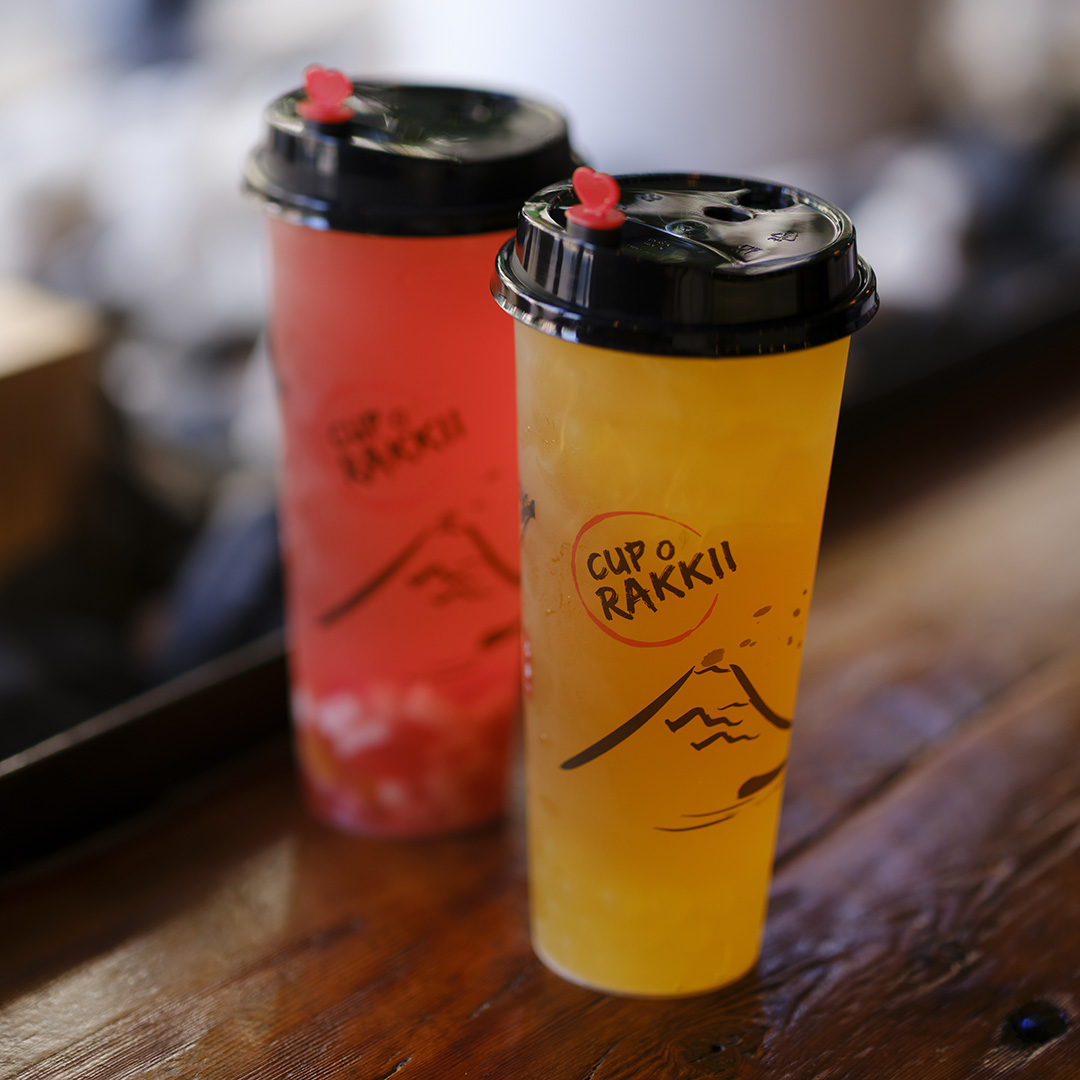
The entry-level ramen—and, naturally, the first one on the ramen menu, is the tonkotsu, a dish with pork belly, corn, scallions, fish paste and soft-boiled eggs. If you want some extra heat, opt for the spicy miso. It brings a spicy hit initially that gradually dissipates. The ramen noodles are fresh and thin; Marco says they are similar to what you'd get in Japan if you ordered ramen. Other ramen varieties are worth seeking out, such as the fried chicken ramen and Osaka beef ramen. (Rakkii also serves udon, those chewy, sturdy noodles in broth, too.) If you're a vegetarian, there's a ramen for you with a vegetarian broth with tofu, scallions, pickled ginger, bean sprouts and bamboo shoots. (It wouldn't be a vegetarian ramen broth without mushrooms.) And of course, you can customize and add ingredients to your ramen, such as egg, karaage chicken, fish cakes, scallions and so forth.
Marco set up the below-grade shop in a building that had, in the estimation of a neighbor across the street, been vacant for decades. The location is perfect: adjacent to Lehigh University, subject to lots of foot traffic. The interior is spare, modern and subtly Japanese—it's not full of stereotypical Asian décor tropes. Marco used reclaimed wood from the existing structure throughout his restaurant.
They got to work quickly, and since its inception, their ambitions manifested rapidly, considering the growth of the Rakkii brand in just three short years. Each restaurant has its own subconcept—Cup o' Rakkii, a Japanese take on Taiwanese bubble tea with fresh fruit teas, bubble teas and what they call dirty tea.
The Lus also own another adjacent food business, Oahu Poke, in the Quakertown Trolley Barn Public Market.
Hawaiian poke is full of fresh veggies with raw or cooked proteins and served over rice or lettuce. You can mix and match the ingredients (like you would at Chipotle or even Playa Bowls, for example) and pick your own dressing. “We are always looking to bring this to new places,” says Bryan.
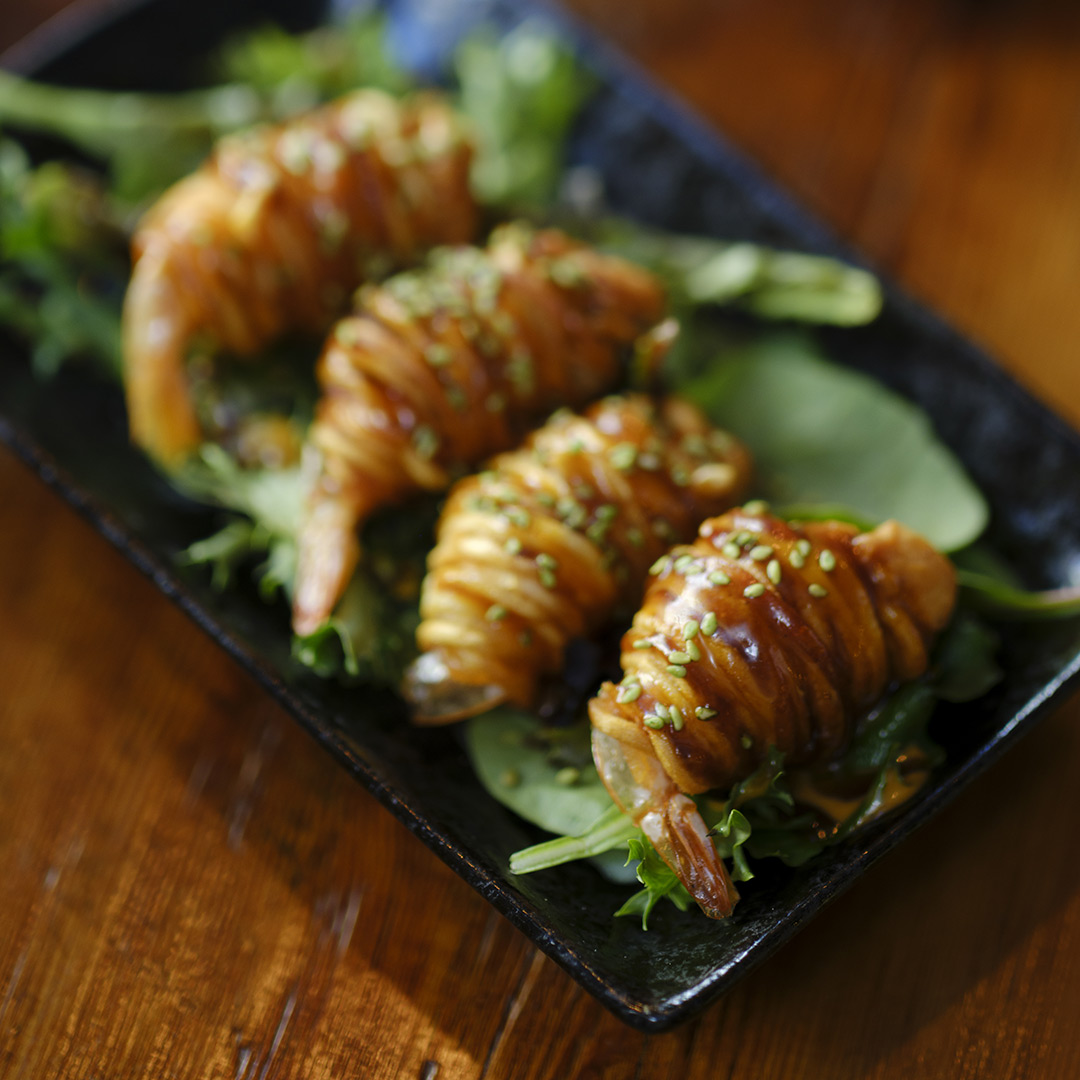
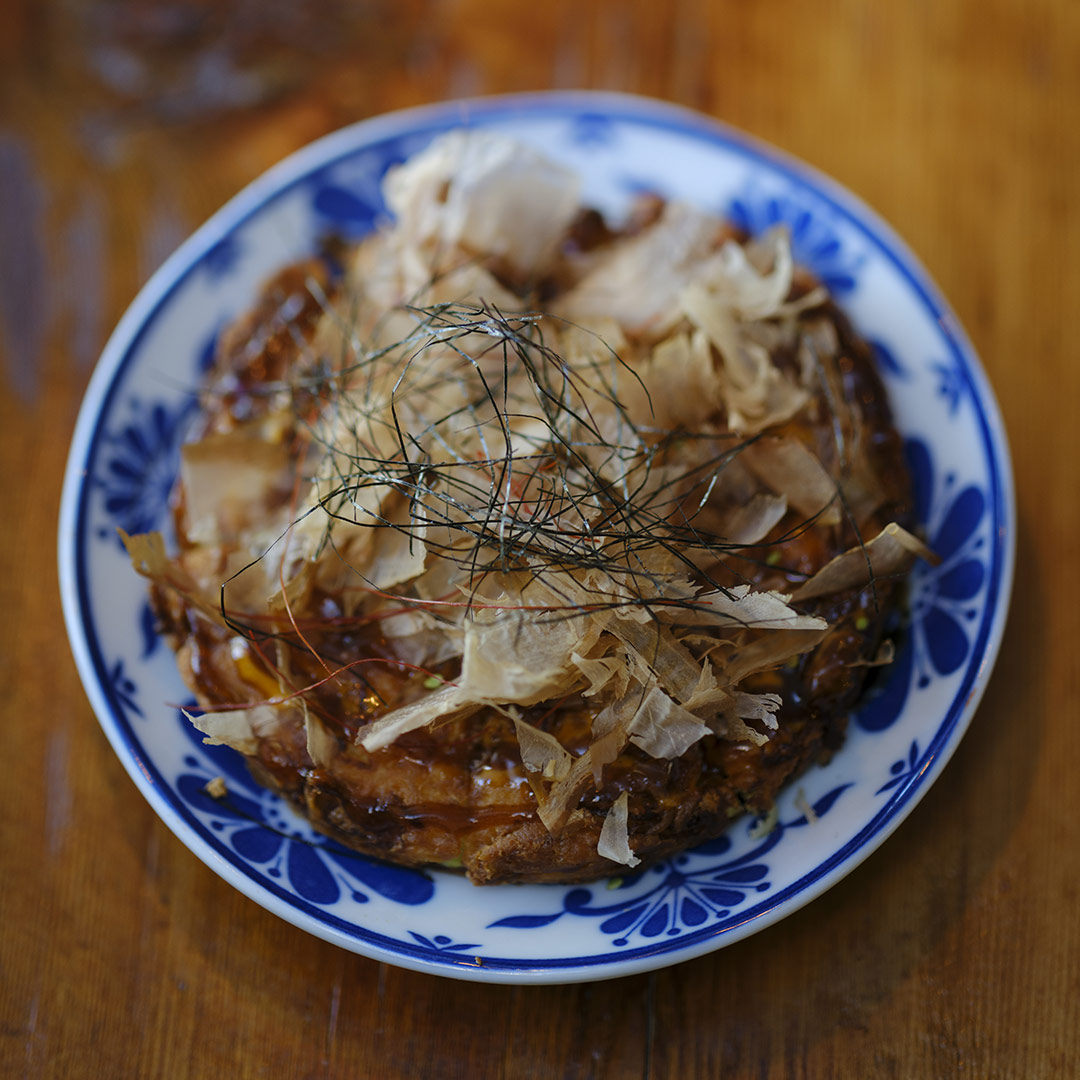
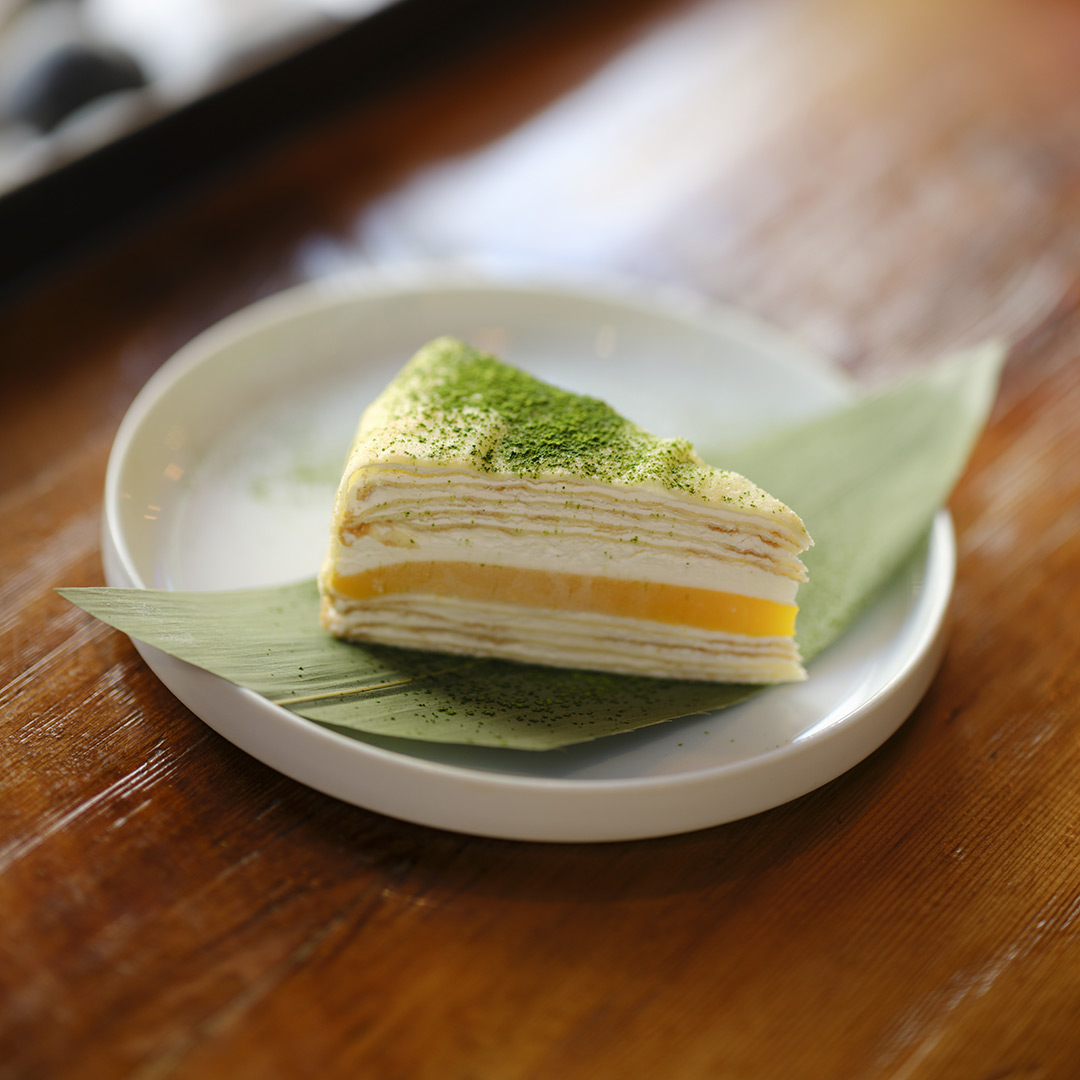
The expansion can at least be partially attributed to the serendipity of Kevin Patton, a customer who kept coming in on nearly a daily basis over the course of a few weeks, and who helped get the Doylestown location off the ground. “He wanted to bring traditional Japanese ramen to as many places as possible. As an expert in business, he was able to succeed in our expansion. He is one of our good friends and a great business partner who we see eye to eye with in the realm of ramen,” says Bryan.
Marco definitely spends time here in Bethlehem, but is frequently working with his staff in those other locations to help automate processes and streamline things—along with maintaining the quality that Rakkii Ramen is known for. And of course, there's always the scouting of new locations. When asked if he sleeps, Marco says dryly, “I try, about four hours a night.”
That diligence translates into bowls of high-quality ramen executed with fine attention to detail, with fresh, well-prepared ingredients. If there's one thing they want you to know about eating ramen, it's that you've gotta make some noise. Slurp those noodles. It's a sign of respect—and a compliment to the chef, says Bryan.
Rakkii Ramen
328 S. New St., Bethlehem | 610.419.8007 | rakkiiramen.com
*Please check their website and/or social media for current operating hours and procedures.
Hours
11:30 a.m.–8:30 p.m. daily.
One menu all day—and the revolving door attests to that. Being adjacent to Lehigh with those hours is also smart, as students eat at all kinds of irregular hours.
Parking
Street parking and parking deck right next door
Reservations
Not accepted
What to Order
Ramen, of course! Tonkotsu ramen, the spicy miso ramen—any of them! Seafood ramen adds fish cake, shrimp and mussels, in a soy dashi. In the “before noodles” menu, you could sample karaage chicken, which is breaded lightly and fried and is incredibly flavorful. (That same chicken appears in the popular curry chicken rice bowl.) Another option? The noodle wrapped shrimp, which is deep fried, with spicy mayo and Okinawa sauce. For dessert? There's definitely mochi (flavors rotate); don't miss the classy and understated mango crêpe cake, comprised of delicate cake layers and a yuzu cream and dusted off with vibrant, grassy matcha powder. Wash it down with some lychee rose or passionfruit Japanese iced tea, if you want something cold, or opt for something more immediately traditional and warming, such as green, jasmine or brown rice tea.
Random Detail
If you use the bathroom, you'll notice an unusual, although logical, addition for a restaurant: mouthwash. Marco thought that it might be a nice touch. “You know, if you're eating a lot of garlicky or spicy things, and you're on a date,” he says.







